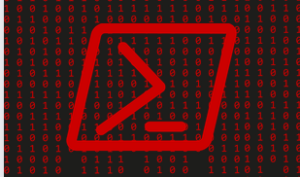MedusaLocker: Exposing the Venomous Tactics of a Paralyzing Ransomware Threat

Within the dark domain of cyber threats, MedusaLocker ransomware lurks as a daunting adversary, striking fear into the hearts of individuals and organizations alike. Operating with stealth and precision, MedusaLocker employs a combination of sophisticated techniques to infiltrate networks, encrypt files, and demand hefty ransoms from its victims.
One of the primary entry points for MedusaLocker actors is through vulnerable Remote Desktop Protocol (RDP) configurations. Exploiting these weaknesses, they gain unauthorized access to victim devices, laying the groundwork for their nefarious activities. Additionally, email phishing and spam campaigns serve as common initial intrusion vectors, with the ransomware payload often directly attached to malicious emails.
Once inside a system, MedusaLocker wastes no time in executing its malicious agenda. Using a batch file to invoke a PowerShell script, the ransomware propagates throughout the network, leveraging various protocols such as ICMP and SMB to detect and infect attached hosts and shared storage. This relentless propagation strategy allows MedusaLocker to swiftly spread its web of encryption, leaving a trail of devastation in its wake.

The modus operandi of MedusaLocker extends beyond mere encryption. The ransomware exhibits a series of systematic behaviors designed to maximize its impact and evade detection. It restarts essential services, terminates processes of security software, and cleverly restarts the victim machine in safe mode to avoid detection by security measures.
Encrypting victim files with the robust AES-256 encryption algorithm, MedusaLocker ensures that decryption without the designated key is virtually impossible. It meticulously encrypts files every 60 seconds, sparing only those critical to the victim’s machine’s functionality or with specific file extensions.
Establishing persistence is crucial for MedusaLocker’s longevity. It achieves this by copying executable files to strategic directories and scheduling tasks to run the ransomware at regular intervals, ensuring its grip on the compromised system remains firm.
In the aftermath of encryption, MedusaLocker leaves behind a chilling message—a ransom note placed in every folder containing encrypted data. This note serves as a grim reminder of the ransomware’s grip, providing victims with instructions on how to communicate with the perpetrators and often leaving them grappling with exorbitant ransom demands tailored to their perceived financial status.

As the shadow of MedusaLocker looms large in the digital landscape, it is imperative for individuals and organizations to fortify their defenses. Vigilance, robust cybersecurity measures, regular backups, and education on phishing awareness are essential weapons in the ongoing battle against ransomware threats like MedusaLocker. Only by staying informed and prepared can we hope to thwart the advances of this insidious digital adversary.
